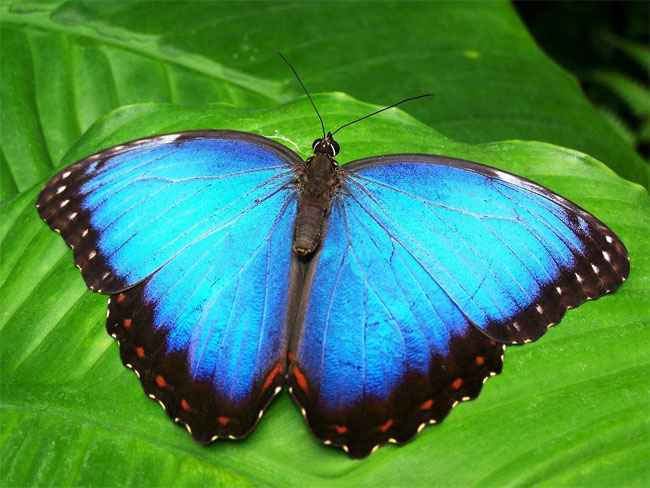ORLANDO, Fla., June 9, 2020 — Ultralow-power, ultrahigh-definition displays and screens that will be easier on the eyes could be possible with technology being developed by researchers at the University of Central Florida (UCF). Their approach illuminates the display by reflecting light from the surrounding environment, rather than by using energy-intensive LEDs to light the display from behind the screen.
The approach is bioinspired. Many animals display color by scattering and reflecting light when the light hits the nanoscale structures on their bodies. “If we see butterflies, octopuses, or many beautiful birds, their color actually originates from nanoscale structures on their feathers, skin, or scales,” professor Debashis Chanda said. “What the butterfly does is simply scatter light back in a way that it creates all this beautiful color without absorbing anything.”
Similar to a butterfly, the technology known as plasmonic color display can show different colors based on the size, shape, and patterns of reflective metallic nanostructures inside a screen. However, the technology has limited ability to display the correct color at different angles and fabricate it over large areas.

UCF researchers have created new technology to display color that uses nanoscale structures inspired by butterflies and other animals. Courtesy of Garoch from Pixabay.
To display colors that do not depend on viewing angle, Chanda and his team made nanostructures into precise designs that allowed the researchers to control angle-independent light scattering.
The researchers enabled nanoparticles to self-assemble in a quasi-random pattern on a predesigned substrate and optimized the self-assembly process so that a specific color could be created by changing nanoparticle size. Using ultrahigh vacuum physical vapor deposition, they created dense arrays of particles in near-field proximity to a mirror. The gaps between adjacent particles and the mirror led to multidimensional coupling of localized plasmonic modes, resulting in a singular resonance with low angular dispersion and about 98% absorption of incident light at the desired wavelength.
The self-assembly process used in the study is similar to how the human body controls growth, Chanda said. In the body, enzymes and hormones released at certain times regulate growth. In the UCF study, deposition rate, pressure, and temperature control the design and growth of the nanostructures, and control of the nanostructures provides control over the color of light displayed.
“With the mechanism we developed, we can use physical parameters to map back to a particular pattern and subsequently a color,” Chanda said. The hybrid display can be programmed to display images and video.
The researchers also demonstrated the capabilities of the system to control black states. They used a liquid crystal layer to block the light scattered by the nanostructured surface in a controlled manner. According to Chanda, this approach resulted in the first demonstration of black and gray colors in structural color displays.
With the field still emerging, Chanda said it could be a while before displays and consumer products using plasmonic nanostructures are available to the public. The results of the study are a step in that direction.
“It’ll be a step up for people to get used to it,” he said. “But this is a way to create displays that are harmonious with how nature displays color and as a result look more natural and don’t pump out a huge quantity of light into your eyes.”
The research was published in Proceedings of the National Academy of Sciences (www.doi.org/10.1073/pnas.2001435117).